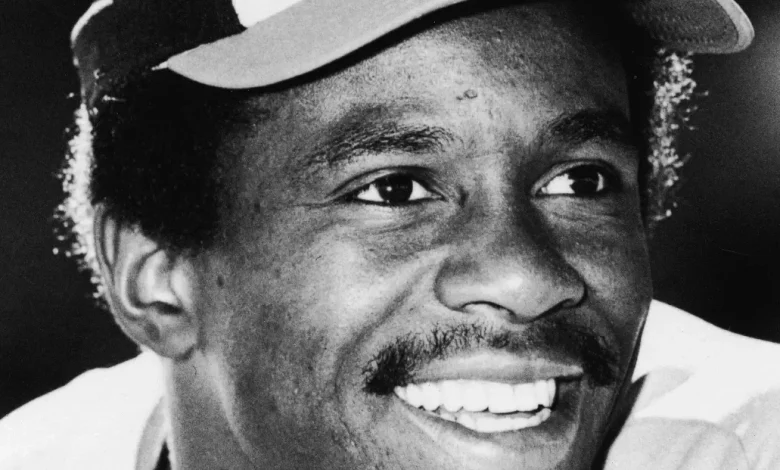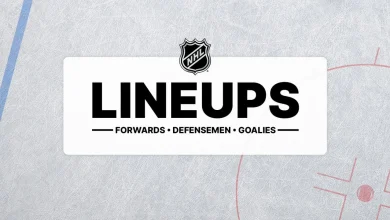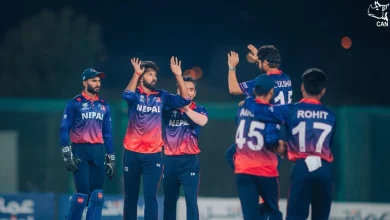A Veteran’s Day salute

More than 500 major league baseball players served in the military during World War II, while the number who served during the Vietnam conflict remains murky. Some sites list as few 54 while others have the number as high as 117. Some of the more notable names who served were Al Bumbry, Garry Maddox, and Jim Bibby. Many others served in the National Guard or a reserve unit of one of the other military branches. Nearly all lost some playing time while fulfilling their military commitment. Serving in the Reserves didn’t necessarily mean you wouldn’t see some type of action. Star pitcher Mickey Lolich was called into active duty to help quell the Detroit riots of 1967.
Granted, it was nothing like World War II, where stars and minor league players often missed multiple years of playing time while fighting in Europe or the Pacific. Vietnam was nothing to sneeze at. Two minor league players, Dell Chambers and Chuck Chase, were killed in action in Vietnam.
A handful of active major league players were called to serve in Vietnam. The most decorated Vietnam War veteran to play in the majors was Chuck Goggin. Goggin, a Florida native, signed with the Dodgers right after his high school graduation. He spent 1964 and 1965 in the Dodgers’ minor league system. He had planned to join the Army reserves (along with several Dodger teammates, including Don Sutton). Goggin had a 4-F draft status due to a knee injury he had suffered. The Army doctor told him that he’d never be drafted with that knee, so Goggin passed on the Reserves.
By November, Goggin received his draft notice. His 4-F had been changed to 1-A. He was now a Marine and by July of 1966 was in Vietnam. Goggin served under legendary Marine Colonel John Ripley in a platoon called Ripley’s Raiders. On April 13th, 1967, Goggin stepped on a land mine on the Ho Chi Minh Trail. The blast threw him eight feet into the air, and he received 14 shrapnel wounds. After surviving the blast, Goggin still had to walk more than three hours out of the jungle. He spent several weeks aboard a US hospital ship recuperating.
For his bravery, he received the Cross of Gallantry, a Bronze Star and a Purple Heart.
Upon his discharge, he rejoined the Dodgers and spent the 1968 season at AA Albuquerque.
In August of 1969, the Dodgers traded Goggin (and another player) to the Pirates in exchange for Hall of Famer Jim Bunning. Goggin stuck with it and finally got a call-up to Pittsburgh late in the 1972 season.
On September 30, Goggin got his first start of his career and collected the first two hits of his career off the Mets’ Jon Matlack. In a strange twist of fate, Goggin collected his first hit in the same game that Roberto Clemente collected his 3,000th and final hit. A picture later appeared in the newspaper of both men holding their historic balls.
Goggin made the Pirates out of spring training in 1973 but only appeared in one game. In that game, he stoked a single off future Royal ace Larry Gura (then playing for the Cubs) and came around to score on an Al Oliver home run. When the Pirates informed Goggin that they were sending him back to AAA, he balked and demanded a trade. The Pirates did him a solid and sold him to the Braves.
Given new life, Goggin appeared in a career high 64 games, hitting a robust .289. Unfortunately, Goggin ruptured a disc in his back during 1974 spring training and was never the same. The Braves traded him to the Red Sox, and he spent most of 1974 in AAA Pawtucket. He did get a late-season call-up and appeared in two game,s but did not collect a hit.
At the age of 28, having defied the odds both in Vietnam and those of becoming a major league baseball player, Goggin retired from the game he loved. He coached for several years before becoming a US Marshall in Tennessee.
Unless you’re a complete baseball freak or a family member, you’ve most likely not heard the name Ralph Gagliano. Gagliano had one of the most unusual careers of any major league player.
Born and raised in Memphis, Ralph was the younger brother of Phil Gagliano, who enjoyed a 12-year major league career, primarily with the Cardinals. The Gaglianos were a baseball family, and one of Phil’s high school teammates was Tim McCarver.
Cleveland signed Ralph as a free agent in the spring of 1964 at the age of 17. Gagliano was a good-looking young man with a thousand-watt smile and seemed destined for stardom.
He showed promise in the Rookie league at Sarasota, hitting a cool .366, which earned him a promotion to the Class A Dubuque Packers. He appeared in 75 games for the Packers, hitting .226 while battling a knee injury most of the summer.
At the tail end of the 1965 season, the Indians called up the youngster to give him a taste of the big leagues. On September 21, he made his first and only appearance, coming into the game, at Yankee Stadium no less, as a ninth-inning pinch runner for Larry Brown.
At the plate was future Royal Richie Scheinblum, who happened to be making his first major league at-bat. On the first pitch, Scheinblum rolled a grounder to Bobby Richardson at second base, who flipped the ball to shortstop Bobby Mercer for the game’s final out.
One game, one pitch, no official at-bats. At this point, there was no thought that this would be Gagliano’s only major league appearance. He was still very young and had loads of potential.
The box score for that game is fascinating. There were numerous former Kansas City Athletics and future Kansas City Royals playing for Cleveland: Dick Howser, Rocky Colavito, Joe Azcue, Ralph Terry as well as Scheinblum. Jack Kralick, who threw a no-hitter against the Athletics, also pitched for the Tribe.
The season ended a couple of weeks later, and neither Gagliano nor Scheinblum appeared in another game that summer. Gagliano did appear on one baseball card, a 1965 Topps Indians Rookie Stars, which he shared with pitcher Jim Rittwage. Rookie cards were hit or miss in those days. Rittwage finally made the majors in 1970, appearing in just eight games and throwing 26 innings. The remainder of his 11-year career was spent traversing the minors, including one season in the Kansas City Athletics system, playing for their AA affiliate in Birmingham.
Gagliano spent most of the 1966 season playing for Class A Reno Silver Sox before being drafted into the Army. He spent the next three years serving Uncle Sam, primarily in Germany.
After his discharge, he returned to Reno for the 1970 season, where he appeared in 104 games and hit a respectable .275.
He advanced to AA Jacksonville for the 1971 season, but after only hitting .182 in his first 29 games, he was given his release. His once promising baseball career was over at the age of 24. He opened a restaurant and worked briefly as a bookie before finding his calling at a beverage distribution company, where he worked for 27 years, advancing to the position of General Manager. Thus ended one of the more unusual major league careers, a modern-day Moonlight Graham: Yankee Stadium, one game, one pitch, no official at bat.
One of the most accomplished Vietnam War veterans was Al Bumbry. Bumbry grew up in Fredericksburg, Virginia, and was a fantastic high school athlete, excelling in track, baseball, and basketball.
A broken wrist incurred while high jumping in high school forced Bumbry to become a switch-hitter. But his real love was basketball, which led him to Virginia State College, where he played point guard. The school restarted its baseball program during Bumbry’s senior season, so he decided to give the sport one more shot. He was named team captain and hit a smoking .578, which caught the eye of the Baltimore Orioles. The Birds took Bumbry in the 11th round of the 1968 draft, and after convincing him that yes, he did have the potential to play professional baseball, sent him to their Class A Stockton (CA) affiliate. He appeared in 35 games for the Ports but only hit .178.
He didn’t have much time to dwell on his misfortune, as two months after his first minor league season ended, Bumbry was drafted into the US Army. After training at Fort Meade, Bumbry was shipped to Southeast Asia, where he was promoted to platoon leader and put in charge of 40-plus men. Bumbry was awarded the Bronze Star for his leadership and bravery in combat. He often downplayed his military service, saying, “The only thing I can say about that experience was I’m no hero.” After his military commitment ended, Bumbry questioned his return to baseball. The Orioles sent him to Low A Aberdeen, where at the age of 24, it started to come together. Bumbry, freed from the terror of war, hit a cool .336. This earned him a promotion to AA Ashville for the 1972 season. Bumbry continued to rake, hitting .347 in 26 games at Asheville. The Orioles quickly bumped him to AAA Rochester, and Bumbry responded by stroking .345.
He made his major league debut late in the 1972 season, appearing in nine games.
He won the Orioles’ starting centerfielder job for the 1973 season and quickly became a force. He hit .337 as a rookie with a league-leading 11 triples and won the league’s Rookie of the Year award. Steve Busby, who threw a no-hitter that season for the Royals, finished in a tie for third with future Royal Darrell Porter.
Bumbry went on to an outstanding 14-year career, thirteen of those with Baltimore, before retiring at the age of 38. He made one All-Star team and was a member of the 1983 World Series champions. He ended his career with over 1,400 hits and a WAR of 24.
Like many Veterans of earlier wars, when asked what changed, Bumbry replied, “I matured. When you’re responsible for lives, all of a sudden this baseball thing doesn’t seem to be so damn tough.”
Bumbry was elected to the Orioles Hall of Fame in 1987 and remains one of the organization’s most popular players.
On this Veterans Day, take a moment to give thanks to the brave men and women for their sacrifice and willingness to serve our country.





